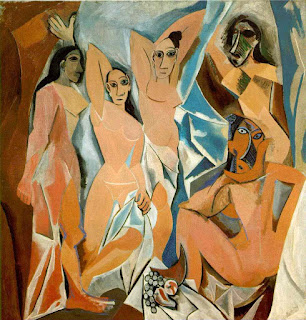Friday, November 7th, 2008
Michael Fried Lecture
 Last night J and I went to a lecture by Michael Fried, one of the most influential art critics/historians of the 20th century. We showed up to the lecture early, just to make sure that we could get a seat. One of the members of the museum staff noticed me there and asked me to help adjust and fix the two slide projectors for the program. I guess all my work as a TA for 201 and 202 has finally paid off – I got to meet Michael Fried and fix the slide projectors that he used! I was in art historian celebrity heaven! I wish that my friend Kiersten could have been there; she had to read everything that Fried has written (hundreds and hundreds of pages) for a graduate seminar two years ago.
Last night J and I went to a lecture by Michael Fried, one of the most influential art critics/historians of the 20th century. We showed up to the lecture early, just to make sure that we could get a seat. One of the members of the museum staff noticed me there and asked me to help adjust and fix the two slide projectors for the program. I guess all my work as a TA for 201 and 202 has finally paid off – I got to meet Michael Fried and fix the slide projectors that he used! I was in art historian celebrity heaven! I wish that my friend Kiersten could have been there; she had to read everything that Fried has written (hundreds and hundreds of pages) for a graduate seminar two years ago.
I think that I understood some of Fried’s theories (and distastes!) for Minimalism better from listening to this lecture than I ever gathered from reading his seminal article, “Art and Objecthood.” Fried explained that Minimalist sculpture wants to activate the exhibition space. For example, the visitor to the gallery automatic has a relationship with the Minimalist sculpture in regards to a bodily relationship with the sculpture size (“the sculpture is bigger than me” or “the sculpture is smaller than me”) and the way the sculpture fills the exhibition space and the viewer’s space (“I can walk around this sculpture,” “The sculpture is in front of me” or “The sculpture is behind me”). Fried explained last night feels that the contrived relationship between Minimalist art and viewer is too easy and too automatic. This explanation of “easiness” and “automatic-ness” makes a lot of sense to me, especially when one contrasts the art that Fried loves (Greenbergian Abstract Expressionism and High Modernism) with Minimalism. Abstract expressionism does not easily and automatically create a relationship with the gallery visitor or surrounding space like Minimalist sculpture.
Fried also showed some paintings by one his favorite painters, Jules Olitski. He explained that the “all over intensity” throughout the canvas is what he meant when he wrote about “presentness” in “Art and Objecthood.” This made so much sense to me – I only partially grasped what he meant by “presentness” in this article. Now I’ll need to re-read the article to see if things make better sense.
Fried also promoted his new book (scheduled for January 2009), which involves the theme of absorption (a theme he has examined over and over in his work) and photography. Fried is particularly interested in how subjects in 17th and 18th century paintings seem to be completely involved (absorbed) in whatever they are doing; they are “self-forgetting” and completely unaware of the viewer. Just like paintings, photography follow this same theme of absorption. It sounds like it will be an interesting book.


